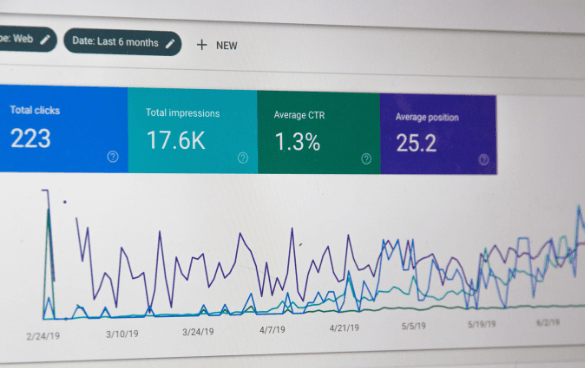Understanding the Power of "Remarketing" In Google Analytics
Understanding the Power of "Remarketing" In Google Analytics
Blog Article
Using Remarketing in Google Analytics: A Comprehensive Guide
Utilizing remarketing in Google Analytics offers businesses a strategic side in getting to out to possible consumers. This overview will certainly shed light on the important actions entailed in taking advantage of the complete capacity of remarketing in Google Analytics, leading to improved advertising and marketing end results.
Comprehending Remarketing in Google Analytics
Remarketing in Google Analytics allows businesses to purposefully target customers that have formerly engaged with their site or mobile application. By leveraging data from Google Analytics, services can produce customized remarketing checklists based upon user actions, such as pages seen, actions taken, or particular objectives achieved. This effective tool enables services to re-engage with users that have revealed interest in their solutions or products, inevitably enhancing the chance of conversion.
Comprehending the various sorts of remarketing strategies is vital for a successful campaign - What Is “Remarketing” In Google Analytics?. Google Analytics supplies various alternatives, consisting of basic remarketing, vibrant remarketing, and remarketing listings for search ads (RLSA) Each kind serves a special purpose and can be tailored to fulfill specific marketing purposes
Moreover, evaluating the performance of remarketing campaigns is vital for maximizing outcomes. Google Analytics offers important understandings right into the effectiveness of different remarketing techniques, enabling companies to make data-driven decisions and fine-tune their targeting strategy. By continuously adjusting and keeping an eye on remarketing initiatives based on analytics data, services can make best use of ROI and drive success in their marketing efforts.
Establishing Remarketing Projects

After establishing target market checklists, the following action is to connect Google Analytics with Google Advertisements. By connecting these 2 systems, companies can seamlessly move audience lists from Google Analytics to Google Advertisements for remarketing objectives. This combination enables more specific targeting and much better project performance.
As soon as the accounts are linked, organizations can produce remarketing campaigns in Google Ads utilizing the audience provides previously defined in Google Analytics. These projects can be personalized with details advertisement creatives, messaging, and bidding methods to efficiently re-engage with previous site visitors and drive conversions. By following these actions, companies can utilize the power of remarketing to enhance their advertising and marketing efforts and raise ROI.
Utilizing Target Market Segmentation Approaches
Predefined sectors in Google Analytics permit you to quickly evaluate typical target market groups like brand-new customers, returning users, or customers who finished a specific goal on your web site. Customized sections, on the various other hand, enable you to produce special sectors based upon specific criteria that are necessary to your service purposes. Dynamic remarketing checklists instantly readjust based on user behavior, showing customized ads to individuals that have actually connected with your website particularly means.
Studying Remarketing Performance Metrics
Upon reviewing the efficiency of remarketing campaigns in Google Analytics, the evaluation of essential performance metrics Visit Your URL provides useful insights into audience interaction and conversion rates. By delving right into metrics such as click-through rates (CTR), conversion rates, cost per procurement (CPA), and return on ad spend (ROAS), marketing professionals can determine the success of their remarketing initiatives. CTR suggests the portion of individuals that clicked the advertisement after viewing it, reflecting the advertisement's relevance and appeal. Conversion rates gauge the percentage of individuals who finished a desired activity, such as making an acquisition, after clicking the ad. CPA exposes the typical expense sustained for each and every conversion, helping examine project success. ROAS, on the other hand, measures the revenue created for every dollar invested in advertising and marketing. Assessing these metrics enables Get More Info online marketers to enhance projects, improve audience targeting, and allot budgets effectively to boost general remarketing efficiency.
Enhancing Remarketing Methods
When refining remarketing techniques in Google Analytics, focusing on audience division is vital for accomplishing campaign success. By splitting your audience right into certain sectors based on their actions, demographics, or interests, you can tailor your ads better to each team. This targeted approach boosts the possibility of engaging customers who have actually already shown rate of interest in your services or items, resulting in greater conversion rates.
An additional important element of optimizing remarketing approaches is continuously screening and refining your projects (What Is “Remarketing” In Google Analytics?). A/B screening various advertisement creatives, messaging, or deals can assist you identify what resonates ideal with your target market and drives the most conversions. By analyzing the efficiency of these tests in Google Analytics, you can make data-driven decisions to enhance your remarketing efforts better
Additionally, leveraging dynamic remarketing can dramatically enhance your campaign results. This feature allows you to reveal customized advertisements to users based upon their previous interactions with your internet site, showcasing product and services they have formerly watched. By delivering customized web content to individuals based on their interests and behaviors, vibrant remarketing can assist raise engagement and drive conversions.
Verdict
To conclude, taking advantage of remarketing in Google Analytics is a strategic strategy to target users that have actually formerly involved with a web site. By creating customized audience checklists and making use of audience segmentation strategies, services can maximize remarketing campaigns for enhanced conversion prices. Evaluating efficiency metrics and constantly optimizing approaches are crucial for taking full advantage of the effectiveness of remarketing initiatives.
Google Analytics supplies different options, consisting of standard remarketing, vibrant remarketing, and remarketing checklists for search advertisements (RLSA)After establishing up audience listings, the following step is to link Google Analytics with Google Advertisements. By linking these 2 platforms, businesses can effortlessly move target market checklists from Google Analytics to review Google Ads for remarketing purposes.When the accounts are linked, organizations can produce remarketing projects in Google Advertisements using the audience details previously specified in Google Analytics.When refining remarketing strategies in Google Analytics, concentrating on target market segmentation is extremely important for achieving project success.
Report this page